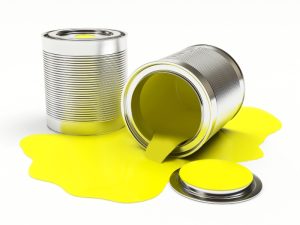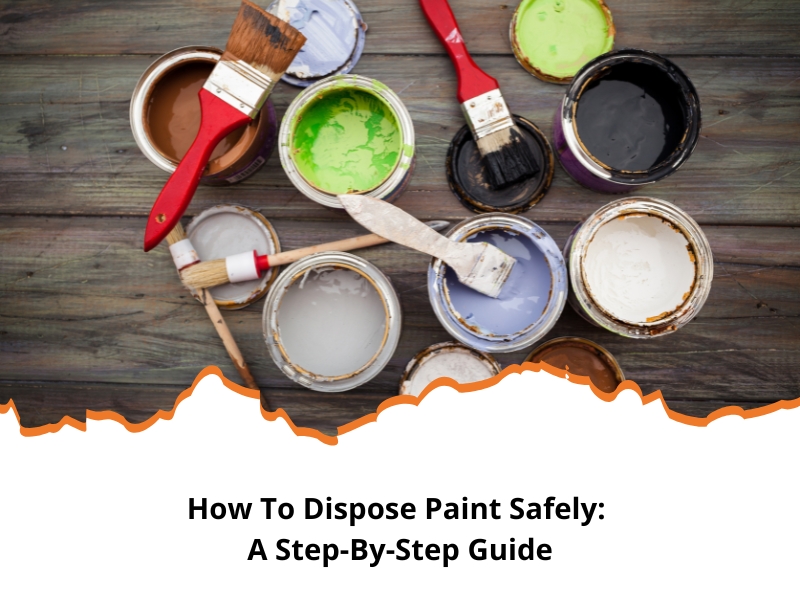Properly disposing of paint is crucial for protecting the environment and ensuring your home or workspace stays safe. Whether you’re a DIY enthusiast or just doing some home maintenance, learning how to dispose of paint safely is essential. This guide will take you through the steps needed to ensure you’re handling paint disposal correctly.
What are the risks of improper paint disposal?
Improper paint disposal poses significant risks to both the environment and human health. Here’s why you should be cautious:
- Environmental damage: Paints contain chemicals that can leach into the soil and water, leading to pollution that harms plants, animals, and aquatic life.
- Health hazards: Breathing in fumes from improperly disposed paint can cause respiratory issues, headaches, and other health problems.
- Legal consequences: Many areas have strict regulations regarding paint disposal. Violating these laws can lead to fines and legal action.
- Fire risk: Some paints are highly flammable, and incorrect disposal could increase the risk of fires.
Understanding these risks highlights the importance of following proper disposal methods.
How do you identify the type of paint you need to dispose of?
Before safely disposing of paint, you must know what type you’re dealing with. Different paints require different disposal methods. Here’s how to identify them:
- Water-Based Paints (Latex or Acrylic): These are the most common household paints and are usually labelled as water-based, latex, or acrylic. They’re easier to dispose of than oil-based paints.
- Oil-Based Paints: These paints take longer to dry and contain solvents that make them more hazardous. They are often labelled as alkyd or enamel.
- Specialty Paints: This category includes marine, automotive, or spray paints. These often contain additional chemicals or solvents that require special handling.
- Lead-Based Paints: If your paint was manufactured before 1978, it might contain toxic lead. Testing kits are available if you’re unsure.
Knowing the type of paint you’re dealing with will guide you in the correct disposal method.
What are the best ways to dispose of empty paint cans?

Empty paint cans are more straightforward to dispose of than those with leftover paint, but they still require proper handling. Here’s what you should do:
- Let the can dry out: If there’s any residue, leave the can open in a well-ventilated area until completely dry.
- Remove the lid: Once dry, remove the lid from the can. This prevents it from being mistaken as containing hazardous waste.
- Recycle: Most empty paint cans made of metal or plastic can be recycled. Check with your local recycling program to ensure they accept them.
- Dispose of non-recyclable cans: If recycling isn’t an option, dispose of the empty cans in your regular rubbish collection, following the specific local guidelines for hazardous waste disposal. These guidelines may include sealing the cans in a plastic bag or using a designated hazardous waste collection service.
How can you dispose of hazardous paint safely?
Hazardous paints, such as oil-based paints and paints containing heavy metals, require extra caution during disposal. Here’s how to do it:
- Identify the hazardous paint: Look for labels indicating flammable, toxic, or dangerous ingredients.
- Do not pour down the drain: Never pour hazardous paints, as they can contaminate water supplies.
- Store safely: If you can’t dispose of the paint immediately, store it in a cool, dry place away from children and pets.
- Take to a hazardous waste facility: Contact your local council to find the nearest hazardous waste facility. They will dispose of the paint following strict safety regulations.
By disposing of hazardous paints properly, you protect both the environment and your health.
Can you donate or recycle unused paint?
If you have paint that’s still in good condition, consider donating or recycling it instead of throwing it away. Here are some options:
- Donate to community projects: Many schools, community centres, and non-profit organisations can use leftover paint for their projects.
- Check with local councils: Some councils offer paint exchange programs or direct you to organisations accepting paint donations.
- Paint recyclers: Some companies specialise in recycling old paint and turning it into new products. Research whether such services are available in your area.
- Use paint for art projects: If you’re artistically inclined, use leftover paint for creative projects like murals or crafts.
What should you do if you accidentally spill paint?

Spilling paint can be a hassle, but quick action can prevent lasting damage. Here’s what to do:
- Act fast: The quicker you respond, the easier to clean up.
- Contain the spill: Use rags, paper towels, or newspapers to prevent the spill from spreading.
- Scrape off excess: Use a scraper or knife to remove as much wet paint as possible.
- Clean the surface: For water-based paints, use soap and water. For oil-based paints, you might need a solvent like turpentine. Always follow the manufacturer’s recommendations.
- Dispose of clean-up materials safely: Materials used to clean up hazardous paint should be treated as hazardous waste and disposed of accordingly.
Properly managing a paint spill can save your surfaces and reduce environmental impact.
How can you minimise paint waste in the future?
Minimising paint waste saves you money and reduces your environmental footprint. Here’s how you can do it:
- Buy only what you need: Measure your space and consult a paint professional to avoid over-purchasing.
- Store properly: Keep paint sealed and stored in a cool, dry place. Properly stored paint can last for years, reducing the need to buy more.
- Use a primer: Using a primer reduces the amount of paint needed for a project, minimising waste.
- Re-use leftover paint: Keep leftover paint for touch-ups or small projects rather than dispose of it.
- Participate in paint exchange programs: If you have too much paint, consider participating in paint exchange programs where you can trade or donate your leftovers.
By following these tips, you can significantly reduce the amount of paint waste you produce.
Need professional help? Trust the experts at Sydney Paintmasters
If managing paint disposal on your own seems daunting, why not leave it to the professionals? Hiring professional painters in Sydney can offer a comprehensive solution. We provide expert painting services, ensuring your project looks stunning while handling the safe disposal of leftover paint. Our experienced team knows how to manage all types of paint, making your home or workspace beautiful and environmentally friendly.
Let us take the stress out of your next painting project. Contact Sydney Paintmasters today and discover the difference our professional services can make.

